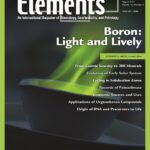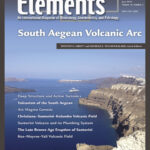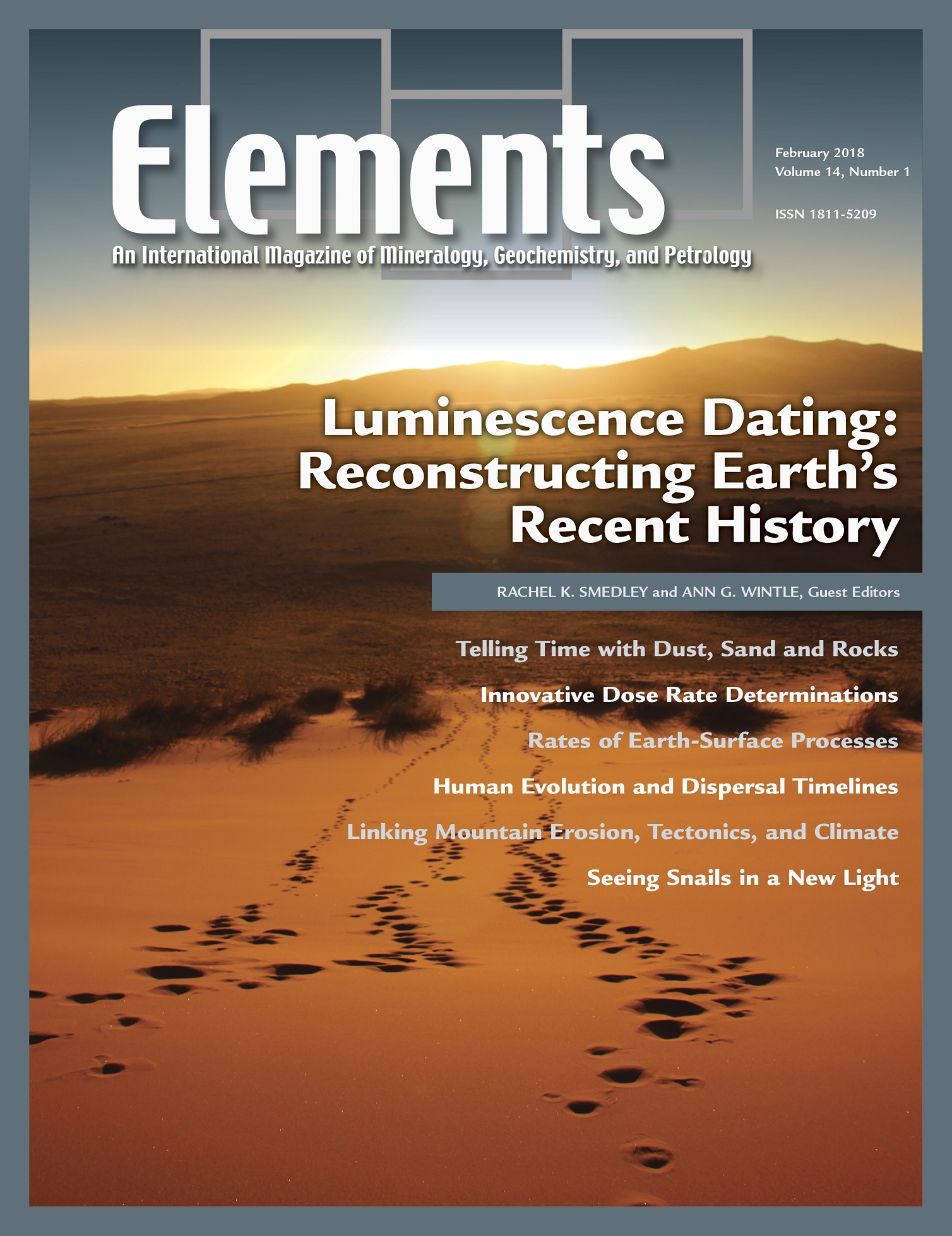
Boron: Light And Lively, August 2017, Vol. 13, No. 4
June 28, 2024
South Aegean Volcanic Arc, June 2019, Vol. 15, No. 3
June 28, 2024Luminescence Dating: Reconstructing Earth’s Recent History, February 2018, Vol. 14, No. 1
$20.00
Luminescence dating is a geochronological tool used to determine the timing of sediment burial, pottery firing, mountain evolution, mineral formation and the exertion of pressure. The luminescence dating technique covers a large age range from modern-day to hundreds of thousands of years using conventional methods, or even up to millions of years according to recent developments.
Luminescence Dating: Reconstructing Earth’s Recent History
February 2018, Vol. 14, No. 1
Luminescence dating is a geochronological tool used to determine the timing of sediment burial, pottery firing, mountain evolution, mineral formation and the exertion of pressure. The luminescence dating technique covers a large age range from modern-day to hundreds of thousands of years using conventional methods, or even up to millions of years according to recent developments. The technique is inherently holistic, drawing upon disciplines such as physics (quantum mechanics), mineralogy (grain structure and composition), geochemistry (natural radioactivity), archaeology and Earth sciences. This issue brings together contributions on new and innovative luminescence dating methods and the latest findings related to Earth-surface processes and human existence.
Why You’ll Love Elements Magazine:
- Expert Contributors: Articles written by renowned researchers in the field of geoscience.
- Engaging Content: Join a community of readers who are passionate about Elements.
- Exceptional Quality: Each issue is printed on high-quality paper with stunning visuals and detailed illustrations that bring complex scientific concepts to life.
Order your copy of the February 2018 issue of Elements magazine today and explore luminescence dating: reconstructing Earth’s recent history.
Related products
-
Zircon – Tiny But Timely, February 2007, Vol. 3, No. 1
$20.00Where would Earth science be without zircon? As Earth’s timekeeper, zircon has proven to be a remarkable and versatile mineral, providing insights into deep time and ancient Earth processes. However, there is still much to learn about Earth’s history from zircon and its behaviour.
-
Glasses And Melts: Linking Geochemistry And Materials Science, October 2006, Vol. 2, No. 5
$20.00Geological interest in studying melts stems from early recognition that melts play a fundamental role in determining the physical and chemical behaviour of magmas and magmatic processes. However, due to the inherent difficulties associated with working at high temperatures, much of the geological research over the last 30 years has used quenched melts or glasses as proxies for melts themselves.
-
Medical Mineralogy And Geochemistry, December 2007, Vol. 3, No. 6
$20.00Medical mineralogy and geochemistry is an emergent, highly interdisciplinary field concerned with both normal and pathological interactions between minerals or amorphous inorganic solids and biomolecules or cells within the human body, and the transport and fate of prions and protein toxins in the soil environment. Prior research has, appropriately, focused on the complex genetic and molecular biological aspects, but there is a growing recognition of the vital need for understanding the surface and bulk properties and reactivities, especially at the challenging nanoscale characteristic of biomacromolecules and biominerals.




